GoldenEar Technology Invisa 650 Handleiding
GoldenEar Technology
Speaker
Invisa 650
Bekijk gratis de handleiding van GoldenEar Technology Invisa 650 (15 pagina’s), behorend tot de categorie Speaker. Deze gids werd als nuttig beoordeeld door 27 mensen en kreeg gemiddeld 4.7 sterren uit 14 reviews. Heb je een vraag over GoldenEar Technology Invisa 650 of wil je andere gebruikers van dit product iets vragen? Stel een vraag
Pagina 1/15

Owner’s Manual
Invisa 525 and 650 In-Wall & In-Ceiling Loudspeakers
Invisa Series®

GoldenEar Invisa 525-650 Manual
Invisa 525-650 Owner’s Manual
2
Congratulations!
Congratulations and thank you for purchasing GoldenEar’s™ Invisa® speakers! You are about to
hear the spectacular difference these very special In-Wall/In-Ceiling speakers will make in your
home’s music system!
Our engineers’ many years of experience in developing loudspeakers has led to these extraordinary
products. In order to ensure that you experience maximum performance, please take a moment
to fully read this owner’s manual and familiarize yourself with the unique installation, assembly
and set-up procedures for your Invisa® speakers.
Please visit our website at www.GoldenEar.com for more information on the technology behind
your new speaker system. If you have additional questions, contact your Authorized GoldenEar ™
Dealer or visit the Q&A page in the Tech Support section of our website.
Your New GoldenEar Speakers
GoldenEar Invisa® in-ceiling/in-wall speakers are designed to fit beautifully in a wide variety of applications. Their
low-profile grille and nearly invisible design allows for perfect integration in a wide variety of locations within your
home. To get the best performance possible and for a product that lasts a lifetime, we strongly recommend that
you follow the placement and setup guidelines provided in this manual.
Cleaning
Do not use a strong or abrasive cleaner on your new speakers’ grilles. Clean them only with a damp cloth, but do
not get them wet.
Preventing Speaker Damage
GoldenEar Invisa® speakers are efficient and can be driven to loud listening levels with moderate amplifier power.
They are also able to handle the output of very powerful amplifiers. To prevent damage to your speakers, please
read all of the following guidelines before hooking them up.
USE AN APPROPRIATE AMPLIFIER. At high volumes a very powerful amplifier can overdrive your
speakers and damage them. And if the amplifier is not powerful enough, it can produce distortion
that can easily damage your speaker. (Consult your dealer for assistance.)
DON’T BE FOOLED BY THE VOLUME CONTROL. It only adjusts how loud, it is not an
indication of power output. If your speakers begin to sound harsh or grating or if you hear other forms
of distortion, turn down the volume immediately!
Avoid use of tone controls and loudness controls as they will demand even more power from
an amplifier, lowering the volume at which damage could occur.

GoldenEar Invisa 525-650 Manual 3
Amplifier Distortion — #1 Threat to your New Speakers!
Amplifier distortion is the principal cause of speaker damage. When listening at loud levels your amplifier may run
out of clean power. It will then begin to produce speaker-damaging distorted power. This will damage any brand
of speaker very quickly! More powerful amplifiers are actually safer — For example: A 40 Watt/channel amplifier
will have substantial distortion above 40 Watts. If driven to 50 Watts, this amplifier will deliver speaker-damaging
distorted power! But a 100 Watt/channel amplifier will have very low distortion below 100 Watts. Therefore, when
the speaker requires 50 Watts, this more powerful amplifier will deliver clean power and speaker damage is less
likely to occur. (See your GoldenEar dealer for amplifier recommendations.)
Do not be fooled by the Volume setting of your system. It only adjusts listening level — it is not a “power-output” dial.
The amount of amplier power actually used at a given Volume setting depends solely on the nature of the source
material you are listening to (at a given Volume setting a quiet section of music will use less amplier power than
a loud section). With typical material, the rated output power of many receivers/ampliers is often reached when
the Volume is set to around -10dB, or between the “11” and “1 o’clock” settings with an analog control (with bass/
treble and loudness controls not used — otherwise rated power may be reached at even lower Volume settings).
Remember, all ampliers produce distortion when operated beyond their rated output power. The resulting
distortion will damage all speakers! If you listen at loud levels, be careful to listen for the point of audible distortion —
if the speakers begin to sound distressed, turn the Volume down or your speakers and/or amplier(s) will be
damaged! This type of damage constitutes abuse and is not covered by the warranty. If louder volumes are
desired, consider a more powerful amplier.
There is Actually a Limit!
Even with these safer, more powerful amplifiers, there is a point at which you could have more power than the
speaker can handle. At that point you will overpower the speaker and damage it. At loud levels do not increase
bass/treble controls from zero and ensure that all loudness/contour/bass EQ buttons are off (otherwise rated
output power will be reached at even lower volume control settings).
The Right Amount of Power
A power-range rating is given in the specifications as a guide to indicate the approximate minimum and
maximum power input of your GoldenEar Invisa® speakers. Amplifiers that meet or even exceed the speaker’s
power-range rating are recommended as their greater power reserves provide better sound. But always use the
speakers within their power-range rating to prevent damage — that is, keep listening levels below the point of
obvious audible distortion.
Setting Bass and Treble Controls on Receiver or Amplifier
Normally we recommend that you set the “Bass” and “Treble” controls on flat (or off, or 0 dB). Same applies for a
graphic equalizer; we recommend that you leave it flat (or off). This will give you the most accurate and natural
sound. If you want more bass, raise your subwoofer’s “Level” control (or raise the subwoofer level on you’re a/v
receiver), keeping in mind that even a little turn of the knob can make a big difference in the sound. The reason
for this recommendation is that we have discovered what is often thought to be improper sounding speakers
is, in fact, a problem caused by the use of tone controls. When in doubt, leave them out (flat); this almost always
results in the best possible and most natural sounding system performance.
Volume Setting
Product specificaties
| Merk: | GoldenEar Technology |
| Categorie: | Speaker |
| Model: | Invisa 650 |
Heb je hulp nodig?
Als je hulp nodig hebt met GoldenEar Technology Invisa 650 stel dan hieronder een vraag en andere gebruikers zullen je antwoorden
Handleiding Speaker GoldenEar Technology

8 December 2023

24 Juni 2023

23 Juni 2023

20 Juni 2023

19 Juni 2023

17 Juni 2023

17 Juni 2023

16 Juni 2023

15 Juni 2023

14 Juni 2023
Handleiding Speaker
- Adam Hall
- Sudio
- Defunc
- PowerBass
- Vifa
- Technics
- Bopita
- EGO
- Scosche
- Karcher Audio
- Easypix
- NHT
- Be Cool
- House Of Marley
- EarFun
Nieuwste handleidingen voor Speaker

14 September 2025
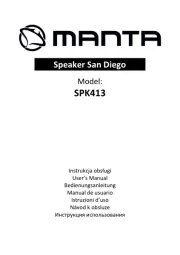
14 September 2025
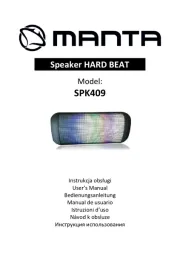
14 September 2025

13 September 2025
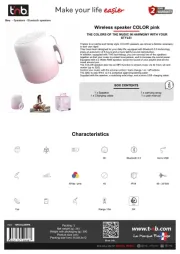
13 September 2025

12 September 2025
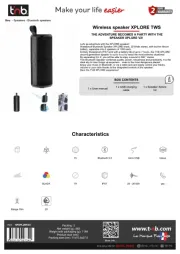
12 September 2025
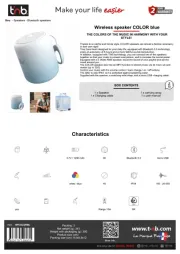
12 September 2025
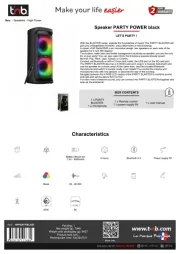
12 September 2025
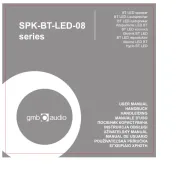
12 September 2025